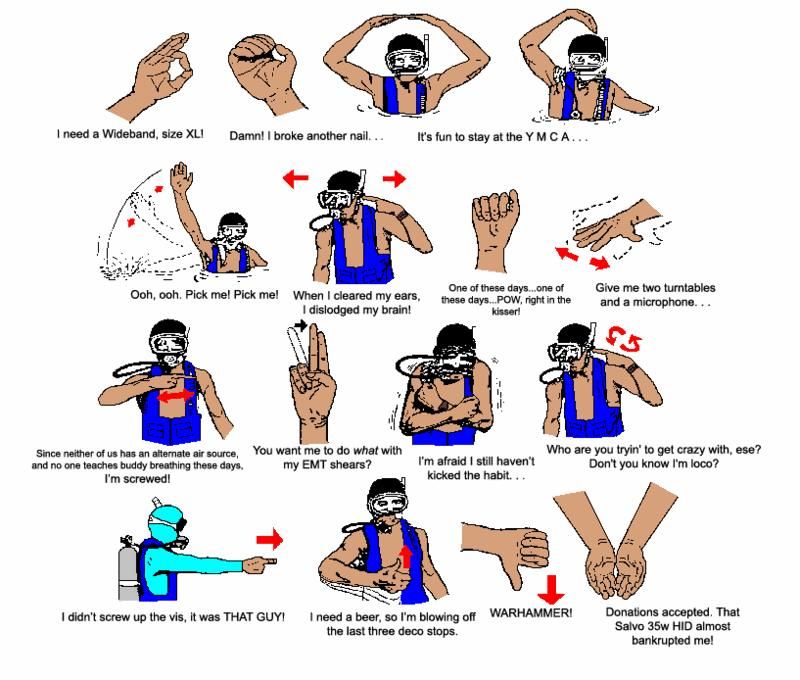Last Updated on April 30, 2022 by Dan
PADI is a diving organization that was founded in 1966. PADI stands for Professional Association of Diving Instructors and it offers scuba instruction to people all over the world. The main hand signals used by PADI are easy to learn, making them perfect for beginners!
Preview our printable Hand Signals Guide.
PADI Hand Signals:
Here are the most important ones to learn:
– OK signal – this means “all good” or “everything is fine.” This is the most common PADI Hand sign and it’s used as a way to tell someone everything is going well, or that you’re still okay while diving in an emergency situation such as low visibility. It can also be used as a salute when you’re finished with a dive.
– Pointing signal – this means “come here.” You can use it on land or underwater to get someone’s attention and direct their movement. This gesture is particularly useful if you need help locating something because they will come to you.
– OK signal with a nod – this means “all good” or “everything is fine.” It’s also used as a salute when the dive is finished and at any time underwater if there’s an emergency that requires attention from other divers.
– Circle motion of thumb and index finger to indicate descending depth, which can be repeated to show how deep someone has gone down during the course of their dive. This gesture will come in handy for water clarity checks, too!
– Pointing motion toward diver on surface – meaning “you’re going up!” You’ll usually use this hand sign while pointing toward yourself before getting out of the water after your last dive so another diver knows it’s time for them to head back.
– Out of Air (OOA) – This means we’re having a problem that requires immediate attention. It’s important to note the severity of this condition, so you’ll need to indicate if it’s an emergency or not by using your index finger and thumb to form an “O” for an emergency OOA signal.
– Pointing motion toward surface – meaning “we should get out now!” The hand sign is used as a heads up before getting back onto shore after diving in order to make sure lifeguards are aware that swimmers will be entering their space soon.
Foul Weather – If there are strong currents, poor visibility, high waves, lightning storms and more then all divers who want continue on with their dive must give the FWM (foul weather marker ) hand signal.
All OK – This is the most common PADI Hand sign and it’s used as a way to tell someone everything is going well, or that you’re still okay while diving in an emergency situation such as low visibility.
Here is our Hand Symbols handout from our new Payhip store:Emergency Signals:
O – Meaning “big problem, get me out of here now!” which should be given by raising your index finger straight up with thumb closed into fist.
Pointing motion toward surface meaning “we should get out now!”. The hand sign can also mean we need help urgently from lifeguards on land when they see swimmers entering their space soon after jumping off a boat for example.
T – The T-signal is used when you need to talk or send a message.
Hands-on the chest and pointed towards oneself means “I am lost”
Eyes wide open, one hand over your head with fingers pointing up it means “Help me!”
Both hands in front of torso at chest level with palms facing outwards for some time mean: “We are in trouble.” This signal should be accompanied by shouts (or other audible distress signals) and waving arms which can help rescue divers identify where people are located underwater.
We hope this article helped you learn more about the main PADI hand signals.
Download a large version of this image:

Here is a funny version of the most popular PADI underwater hand signals


